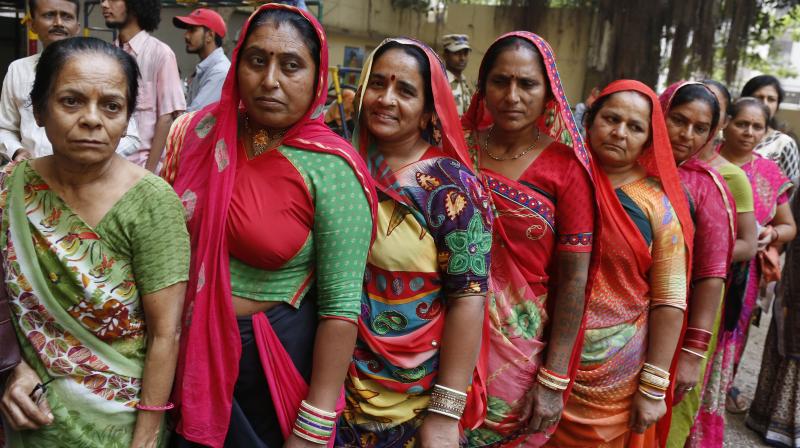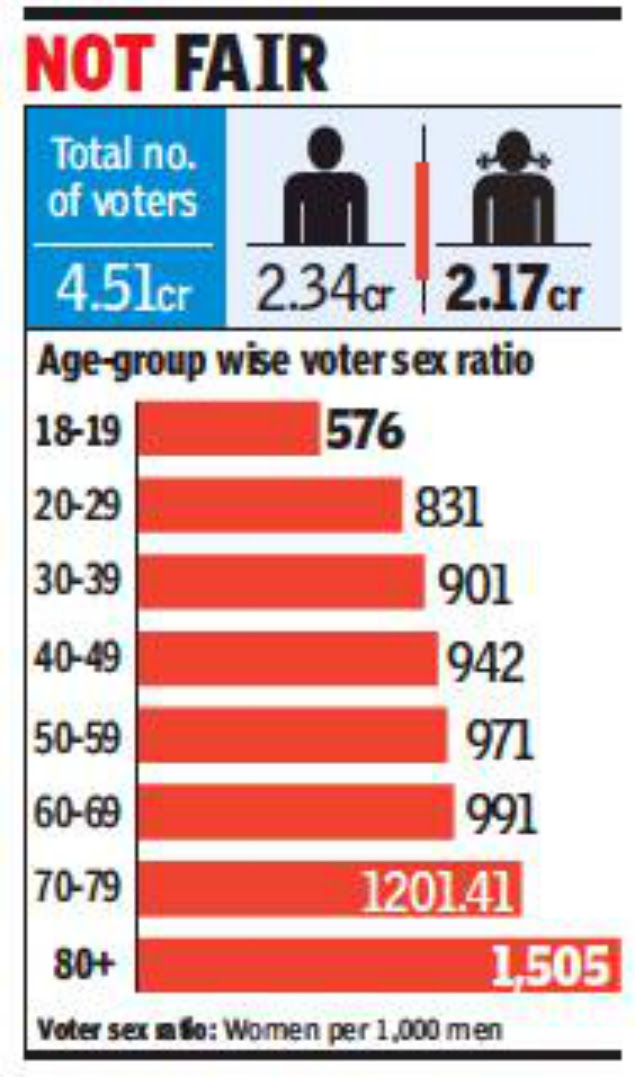In 2001, the child sex ratio in Gujarat was 883 girls per 1,000 boys according to Census data. Eighteen years later, the 2019 Lok Sabha voter list has only 575 women per 1,000 men voters in the 18-19 age group.

Image Courtesy: AP
In 2001, the child sex ratio in Gujarat was 883 girls per 1,000 boys according to Census data. Eighteen years later, the 2019 Lok Sabha voter list has only 575 women per 1,000 men voters in the 18-19 age group. The introduction of sonography machines in the 90s, the sex determination, discrimination and infanticide could possibly change how many women in Gujarat vote in these elections.
Children born in the year 2000-2001 who would now have grown up and get counted as first-time voters in general polls, Times of India reported.
Sociologist Gaurang Jani said in the report that electoral rolls in Gujarat reflect the big social malaise that has the state in its grips.
“This is a failure of the government and society. Young girls are going alarmingly missing from our social fabric,” he said. Chief electoral officer of Gujarat Dr S Murali Krishna said while he cannot comment on the social situation, non-registration of women voters in the marriageable age could be a key reason behind skewed ratio of first-time voters, the report said.

Table Courtesy: Times of India
“In rural Gujarat, majority girls are married off young and many change addresses after marriage. Because of this, young women voter’s name gets deleted from their place of birth without it being promptly registered in the new place,” said Chief electoral officer of Gujarat Dr S Murali Krishna in the report.
On the contrary, an Indian Express report from February claims women’s voting rights in the state have witnessed a surge. “The number of women voters in Gujarat has hit a new high ahead of the upcoming Lok Sabha elections. The gender ratio of the voters in the state that stood at a record 920 females to every 1,000 male voters about 15 months ago has now climbed to 924 females, as per the final electoral rolls published by the Election Commission a week ago,” the report said.
“Ironically, the electoral rolls also highlight the fact that skewed voter sex ratio gets corrected as the age of voter increases. In fact, it does a 180-degree flip as it is highest when women are the oldest. The best is in the 80+ age group which has 1505 women voters per 1,000 male counterparts followed by 70-79 age group which has 1201!” the TOI report said.
“Experts say women numbers in the state began declining rapidly after the advent of sonography machines in the 1990s which triggered en masse sex determination and discrimination. A reflection of this can be seen in the voter list which has a healthier voter sex ratio of women above 30 years of age, born before the 1990s. A top public health expert said that a far higher number of women voters in 70-79 and 80 plus age groups also signifies that if left to nature’s devices, women are a stronger gender, biologically. “It is a documented fact that women outlive men as they are healthier with little vices,” says the expert,” TOI reported.
During the last Lok Sabha elections in 2014, the gender ratio stood at 913. Thereafter, a record was created in the 2017 state Assembly elections when the gender ratio crossed the sex ratio of the state’s entire population —- 918 (as per the 2011 Census) —- and reached 920 women for every 1,000 male voters. “In the draft rolls released on September 2018, this gender ratio stood at 923. At the beginning of January 2019, it has further improved to 924,” said Dr Murali Krishna, Chief Electoral Officer, Gujarat, while speaking to The Indian Express.
“In the last 15 months, while a total of 7,17,234 women got added to the electoral rolls in Gujarat, by January 2019 the number of women voters climbed to 2.14 crore, which is a 3.45 per cent growth compared to the 2.07 crore females who voted during the state Assembly elections. In comparison, only 6,89,668 voters were added during this period. The number of male voters rose only by 3.05 per cent with numbers rising to 2.32 crore from 2.25 crore male voters in 2017. At present, there are a total of 4.47 crore voters in the state,” the report said.